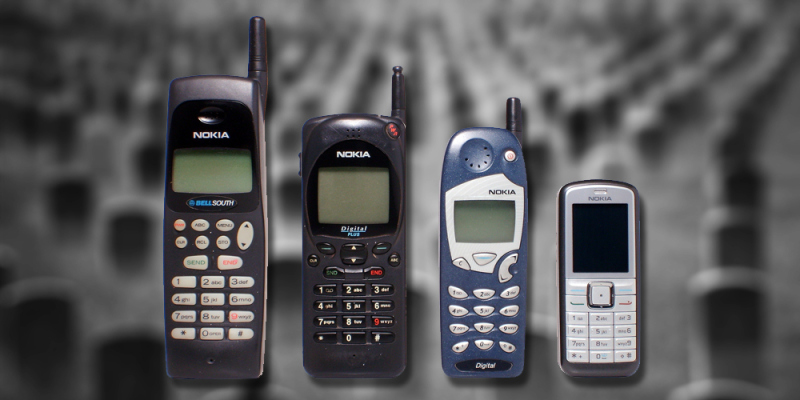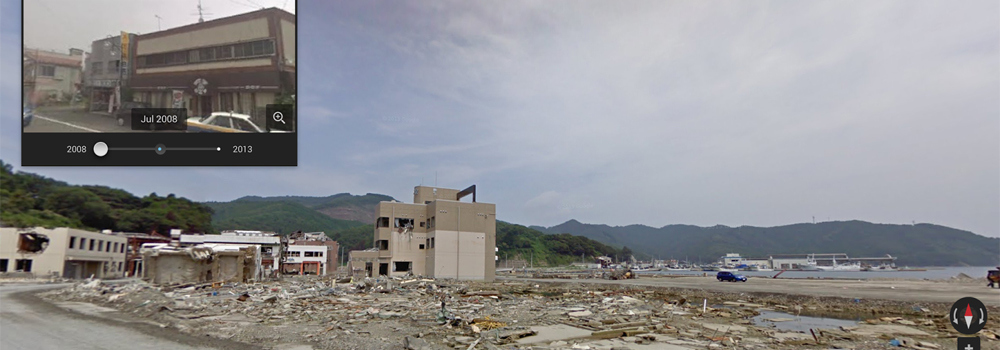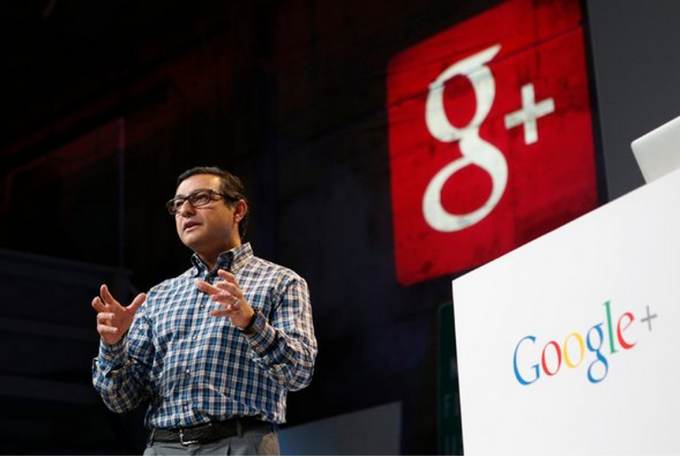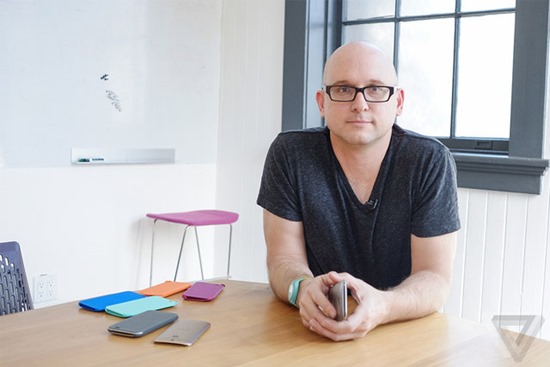Technological observatory April 21-27
This week, the Indra Technology Observatory brings you the following stories:
Goodbye Nokia phones, hello Microsoft Mobile
The long-awaited quality 4G to become a reality as from January 1, 2015
Google teams up with SunPower to bring solar panels to homeowners
Google Street View now lets you travel through time
Google+ breaking up? Hangouts and Photos allegedly moving to Android
Microsoft officially welcomes Nokia Devices and Services
HTC chief designer to leave the company

Following its purchase of Nokia, Microsoft obviously wants to maximize the potential of its brand image. As reported in Celularis, the end of the Nokia brand might be closer than we think, because since its April 25 announcement regarding completion of the deal, it looks set to be renamed Microsoft Mobile. This is a solemn moment for fans of the Finnish company that has brought us so many phones over the years, now legends with their own place in the history of technology. In any case, although the new name is likely to be announced at the end of this month, it will probably not be effective until 2015. And let's not forget that the brand will continue to thrive as the Finnish multinational in Espoo, Finland, specializing in communications and technology—in other words, everything that Microsoft hasn't bought. Once the purchase has gone through, the company will be reorganized as follows:
- Here: specialized in navigation services and maps
- Nokia Solutions and Networks: specialized in telecommunications networks, founded as a joint venture between Nokia and Siemens, formerly known as Nokia Siemens Networks and wholly owned by the Finnish company following its purchase of the Siemens AG stake
- Nokia Advanced Tech: specialized in consulting services
At his speech on April 22 at the 'El Ágora ElEconomista.es' forum, Industry, Energy & Tourism Minister José Manuel Soria confirmed that the digital dividend will be effective from January 1, 2015. His plans to bring the spectrum release forward to this year appear to have floundered. Precipitated by Yoigo, our national telecommunications operators have speeded up deployment of the LTE network on the 1.800 Mhz band and on the 2.600 Mhz band in the case of the least fortunate (such as Movistar). The four operators were right to predict the delay in the arrival of the digital dividend and have done their homework. The digital dividend will reinforce the deployment of the LTE network and optimize coverage and penetration in all the areas that still lack 4G connection: inside buildings and towns and villages outside metropolitan areas. The project needs to be rolled out by the summer in order to meet the deadline imposed by the Supreme Court. The minister said that the plan would be based on the spectrum released by 15 digital terrestrial television channels. Freeing up the spectrum will pave the way to a wider and better 4G network. The government is keen to forge ahead with its promotion of the digital economy in line with the Digital Agenda, and therefore regards the 4G network as both a guarantee and obligation in this transition from analog to digital. Soria made it clear that releasing the spectrum (the 800 Mhz band) and strengthening the 4G network and quality television, in reference to the termination of the 15 DTTV channels, are matters of priority. What the industry minister hasn't confirmed as yet, pending approval of the plan, is whether there will be enough space left over to invite tenders for new television channels. In May the national televisions affected will stop broadcasting their respective channels awarded in 2010 without a call for tenders. The project will be defined according to the spectrum released following the termination of the DTTV channels. In the words of the industry minister: "We'll have to wait and see whether that plan includes any other considerations or not. The important thing is to ensure that the spectrum has been released by January 1".

Google's official blog mentions another solar energy project to which the company has committed funds (100 million dollars on this occasion). This time they have teamed up with SunPower, a company that manufactures solar panels with the capacity to generate more energy on a smaller surface than the competition. Altogether, 250 million dollars will be invested in this new project that aims to offer homeowners the chance to buy a solar energy system at a much more affordable price, guaranteeing that they will not only save on the purchase price but in their electricity bills as well. The picture shows what the installation will look like on the homes that participate in the program, with a SunPower panel that, as noted in the blog, can generate 50 percent more energy per unit area, with guaranteed performance and lower degradation over time. To date, Google has invested in 16 renewable energy projects. This is the third one related to residential solar energy, following its projects with Solar City and Clean Power Finance. Unfortunately, it takes more than money and good intentions. Governments in every country need to do their bit by passing fair laws to encourage the use of this type of energy, and, as we all know, they often do exactly the opposite.
Seven years have passed since Street View was launched on Google Maps, and in that time different parts of the globe have been captured to create the world's largest interactive map. Now the company has announced a new functionality that will let users travel through time and see how places have changed in the intervening period. The announcement was made in an article just posted in the official blog, and the new feature will be available as from this week all over the world. For now, the new functionality is only supported by the web version, but no doubt it will soon reach mobile applications.

To activate it, all you have to do is click on a clock icon that appears at the bottom of the image. And then simply navigate through the previous images to see what new buildings have sprung up and just how dramatically the appearance of a city can change in a few short years—as shown in the picture above of the 2011 earthquake in Japan.

Vic Gundotra, the director and founder of Google+, appears to have been the only force in the company that wanted the social network to compete on an equal footing with Facebook. Reports on the conflict that the Google+ integration has sparked in various quarters have been quick to emerge. The deal with YouTube must have been the last straw. Quite apart from these incidents, what does seem clear is that the future of the net will be different from how we'd imagined it. And precisely because of that, between 1,000 and 1,200 Google engineers are about to swap division. Instead of working in the Google+ team, from now on they will be part of the Android team under Sundar Pichai, who does report directly to Larry Page and is a member of Google's inner circle or what has been dubbed the "L Team". The professional and personal relations that exist in every organization also affect the great multinational. In fact, according to sources like WSJ, ArsTechnica and TechCrunch, it seems that the Hangouts team is already driving this organizational shift. What might look like the simple resignation of a director is actually a crucial restructuring of the role played by each of these services. Google+ will no longer be just another social network but will pull out all the stops to strengthen its "platform" role, the latest big thing in the services world. Android may well absorb this application, which in any case is already being integrated. During the Google I/O, one of the events where Vic Gundotra had the most clout, there will be announcements about several novelties in this program, but now they will all be attuned to the mobile rather than the web perspective. Vic tried to focus everything on the web as the starting point, but that clashed with the views held by many others. This situation is also likely to affect Google+ Photos. Until now, its integration in Android has been much more modest, but the new state of affairs will no doubt speed up this change of direction. The wide range of effects and special characteristics offered by Photos has made it a very popular tool. Precisely this fragmentation of the net into multiple associated services is what is being discussed. The social network will go on as before, following the same course with relative success. What will change, however, are its special functions, which will become more specific and less dependent on Google+. It remains to be seen what affect the storm unleashed by Vic Gundotra's departure will have on a social network that may not have that many users but certainly has its defenders. Dave Besbris, the new G+ director, will no doubt invest every effort and all his determination into making the most of the legacy bequeathed to him.
Finally, after months of rumors, confirmations and announcements, Microsoft has just published the following press release welcoming Nokia Devices and Services into the fold. Redmond, Washington. April 25, 2014. Microsoft Corp. announced it has completed its acquisition of the Nokia Devices and Services business. The acquisition has been approved by Nokia shareholders and by governmental regulatory agencies around the world. The completion of the acquisition marks the first step in bringing these two organizations together as one team. “Today we welcome the Nokia Devices and Services business to our family. The mobile capabilities and assets they bring will advance our transformation," said Microsoft CEO Satya Nadella. “Together with our partners, we remain focused on delivering innovation more rapidly in our mobile-first, cloud-first world." Reporting to Nadella is former Nokia President and CEO Stephen Elop, who will serve as executive vice president of the Microsoft Devices Group, overseeing an expanded devices business that includes Lumia smartphones and tablets, Nokia mobile phones, Xbox hardware, Surface, Perceptive Pixel (PPI) products, and accessories. Microsoft welcomes personnel with deep industry experience in more than 130 sites across 50 countries worldwide, including several factories that design, develop, manufacture, market and sell a broad portfolio of innovative smart devices, mobile phones and services. As part of the transaction, Microsoft will honor all existing Nokia customer warranties for existing devices. Microsoft will continue to work closely with a range of hardware partners, developers, operators, distributors and retailers, providing platforms, tools, applications and services that enable them to make exceptional devices. With a deeper understanding of hardware and software working as one, the company will strengthen and grow demand for Windows devices overall. For some a genius and for others a traitor, the former Nokia CEO has proved he is worth his weight in gold for Microsoft, having enabled the company to complete the acquisition of the juiciest part of the cellphone manufacturer. Meanwhile, Nokia has sent all its Windows Phone customers an updated privacy notice indicating that Nokia still owns software like Nokia Maps and Drive, and that it will continue to support users and protect their data.

The man behind those stunning HTC One designs, Scott Croyle, is leaving the Taiwanese company, apparently to work on his own projects. However, his departure will not be immediate, but rather a long-term transition. For the time being, Scott will continue his association with HTC but in a consultancy role. In the words of the company, “HTC remains at the forefront of smartphone innovation. Scott Croyle will be focusing on special projects and dedicated on next generation developments." The change has led to a few additional movements within the organization. Scott's second-in-command, Jonah Becker, will take over all of the former's responsibilities at the HTC studio in San Francisco. Meanwhile, Drew Bamford has also been promoted from overseeing the Sense user interface to heading up all HTC software and services. There have been a lot of changes at HTC in recent years, but this latest one will undoubtedly have the greatest impact on the company. Without the creative mind of the latest HTC One range, who knows what the next terminals will look like? What's your guess?
